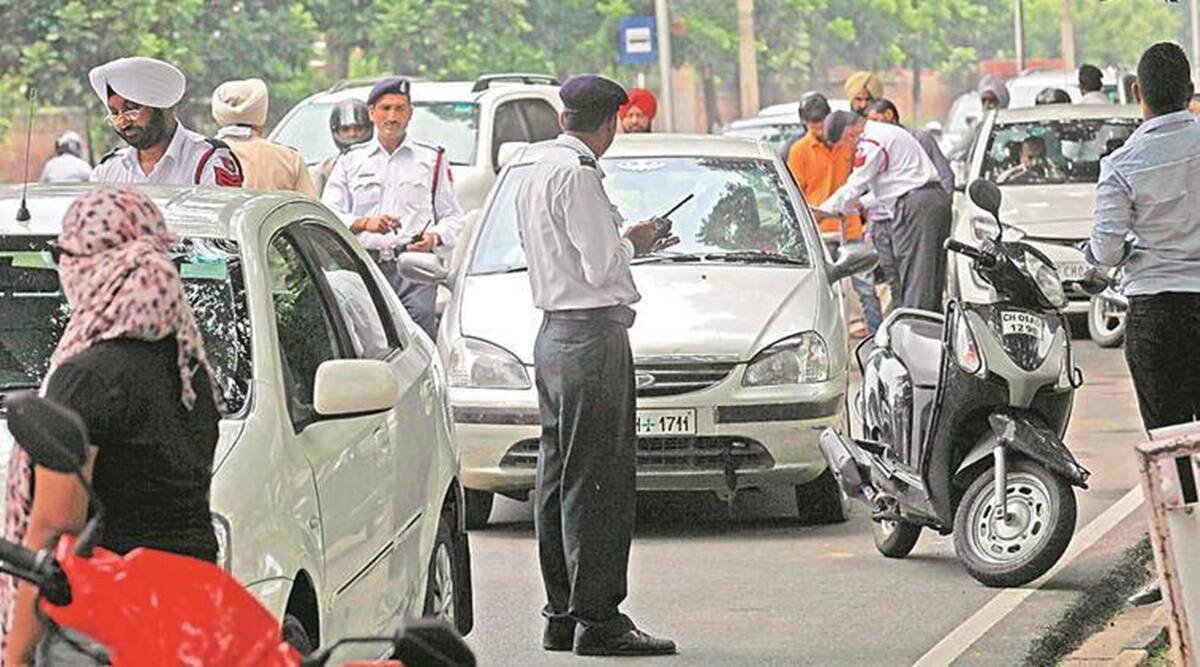 The maximum daily traffic saw 96,555 passenger car units on the Ropar-Chandigarh road, followed by 80,053 passenger car units on Zirakpur-Panchkula-Kalka stretch. (Express File Photo)
The maximum daily traffic saw 96,555 passenger car units on the Ropar-Chandigarh road, followed by 80,053 passenger car units on Zirakpur-Panchkula-Kalka stretch. (Express File Photo)About 59.5 per cent of the traffic at the outer cordon of Chandigarh was coming for the purpose of work while 3.1 per cent of them came for the purpose of education, the interim report by RITES found.
RITES is an engineering consultancy corporation, specialising in the field of transport infrastructure, under the ownership of Indian Railways.
As the inflow of vehicles was studied at the outer cordon of Chandigarh that is the periphery, the purpose of visit was also studied of which 18.5 per cent were coming for business while 4.4 per cent were coming for tourism and 8.4 per cent for social purpose.
Also, the travel frequency of the vehicles coming into Chandigarh at the outer cordon was researched of which it was found that 46.9 per cent of them are coming daily and about 23.2 per cent come weekly while 21.5 per cent come monthly and 8.5 per cent of the traffic comes occasionally.
Subscriber Only Stories
It was said that even as about 47 per cent of trips on the outer cordon of Chandigarh are performed daily, about 29 per cent of passenger trips are made within 25 kilometres, the interim report noted.
The RITES report also found that maximum traffic to study area comes from Chandigarh-Ambala Expressway and Panchkula-Kalka Highway, followed by Kharar-Kurali road and Zirakpur-Rajpura road.
THE NUMBERS
The Chandimandir Toll Plaza, Panchkula-Kalka Highway, saw daily traffic of 61,71 vehicles while Chandigarh-Ambala Expressway saw 1,12,737 vehicles daily. According to the study, the Zirakpur-Rajpura road saw 40,523 vehicles while Panchkula-Ramgarh road saw 36,577 vehicles.
Also, the maximum share of goods traffic was observed on Panchkula-Ramgarh Road: 15.3 per cent. On the remaining locations, goods traffic varied from 3 per cent to 15 per cent at outer cordon. It was stated that the peak hour factor varies from 6.4 per cent to 8.8 per cent of total traffic.
The maximum daily traffic saw 96,555 passenger car units on the Ropar-Chandigarh road, followed by 80,053 passenger car units on Zirakpur-Panchkula-Kalka stretch.
This had maximum share of personal cars, which was 44 per cent, and 39 per cent of two-wheelers, followed by 5.6 per cent of slow-moving vehicles.
RITES HAS PROPOSED UNDERPASSES AT 9 JUNCTIONS
The Rail India Technical and Economic Services (RITES), after a survey, has also proposed the building of underpasses at nine of Chandigarh’s 15 major junctions to ease traffic congestion and prevent vehicular flow from choking.
According to the RITES, at least 15 traffic junctions in the city stayed choked during peak traffic hours at present, with the situation likely to get worse in the next five years as the number of vehicles increases.
RITES, during its survey, factored in passenger car unit — that is the number of vehicles approaching these junctions during peak hours.
A “peak approach” — vehicles crossing during peak hours — of passenger car unit was calculated for all the 15 junctions during the study. One bus was calculated to be equivalent to three cars, and one two-wheeler as 0.5 cars by RITES for the sake of its study.
The highest peak approach passenger car unit was found at Transport Chowk (Purv Marg- Madhya Marg junction), at 10,572 vehicles, with the same likely to rise to 14,148 vehicles in 2027.
- The Indian Express website has been rated GREEN for its credibility and trustworthiness by Newsguard, a global service that rates news sources for their journalistic standards.

